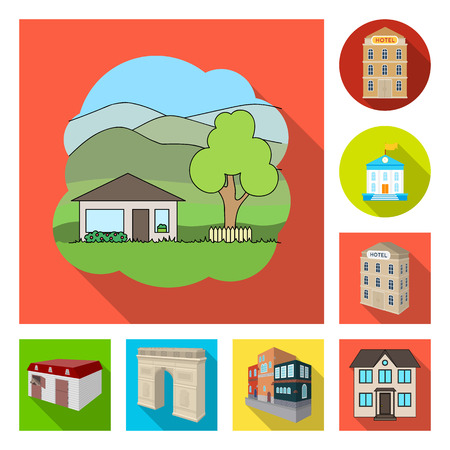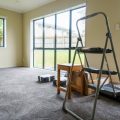1. Understanding Eco-Friendly Materials in the UK
Eco-friendly materials have become increasingly significant in British home interiors, reflecting a growing awareness of sustainability and environmental stewardship. But what exactly qualifies as an eco-friendly material within the UK context? In essence, these materials are sourced, produced, and disposed of in ways that minimise their environmental footprint. They can be natural, recycled, or upcycled products that reduce waste, conserve energy, and support healthier living environments. The relevance of such materials in British homes is heightened by stringent UK regulations aimed at reducing carbon emissions and promoting green building practices. Below is a table outlining common eco-friendly materials found in British interiors, their origins, and environmental benefits:
| Material | Origin | Environmental Benefits |
|---|---|---|
| Bamboo | Rapidly renewable grass, often imported but now increasingly available from European sources | Fast-growing, requires minimal pesticides, biodegradable |
| Reclaimed Wood | Sourced from old buildings and furniture across the UK | Reduces deforestation, reuses existing resources, adds character |
| Lime Plaster | Naturally occurring mineral-based plaster traditional to British homes | Breathable, non-toxic, low embodied energy |
| Wool Insulation | Locally sourced from British sheep farms | Renewable, excellent thermal properties, supports local agriculture |
| Recycled Glass Tiles | Manufactured using post-consumer glass waste in the UK | Reduces landfill waste, durable, visually striking options for kitchens and bathrooms |
The adoption of these materials aligns with UK building standards such as BREEAM (Building Research Establishment Environmental Assessment Method), which encourages the use of sustainable products. By understanding the origins and impacts of eco-friendly materials tailored to the British market, homeowners can make informed choices that not only enhance their interior aesthetics but also contribute positively to the environment.
2. Sourcing Locally: Sustainable British Suppliers
Incorporating eco-friendly materials into your British home starts with sourcing locally. By choosing materials from UK-based suppliers, you not only reduce the carbon footprint associated with transportation but also support the nation’s thriving industries and skilled artisans. The importance of opting for locally-sourced products goes beyond environmental benefits—it enriches your interiors with authentic character and heritage, while championing sustainability.
Why Source Local Materials?
British-made materials such as reclaimed timber, British wool, and recycled glass are increasingly popular among designers seeking to create spaces that are both stylish and environmentally responsible. These choices reflect a commitment to quality, tradition, and eco-conscious living.
Key Eco-Friendly Materials from UK Suppliers
| Material | Source | Sustainable Benefits | Interior Uses |
|---|---|---|---|
| Reclaimed Timber | UK Salvage Yards & Reclamation Centres | Reduces waste, preserves history, avoids deforestation | Flooring, feature walls, shelving, bespoke furniture |
| British Wool | Local Farms & Textile Mills | Biodegradable, renewable, supports rural economies | Cushions, throws, carpets, upholstery |
| Recycled Glass | British Glassmakers & Upcyclers | Lowers energy usage, diverts glass from landfill | Tiling, splashbacks, lighting fixtures, decorative objects |
Championing British Craftsmanship and Heritage
Selecting materials crafted in the UK allows you to celebrate the country’s rich design heritage while reducing environmental impact. From handmade tiles in Stoke-on-Trent to artisan textiles from Yorkshire mills, every element tells a story—bringing warmth and authenticity to your home. By supporting local suppliers, you help preserve traditional skills and ensure that sustainable design becomes an integral part of British interiors.

3. Integrating Eco-Friendly Materials into Classic British Interiors
Infusing sustainable elements into classic British interiors is not only a nod to environmental consciousness but also an opportunity to enhance the timeless charm found in Victorian terraces, Georgian townhouses, and countryside cottages. The key lies in balancing heritage style with modern eco-friendly choices, ensuring that each space feels authentically British while treading lightly on the environment.
Blending Sustainability with Tradition
Classic British interiors are defined by ornate details, rich textures, and a sense of history. To integrate eco-friendly materials seamlessly:
- Repurpose Period Features: Restore original wood floors and fireplaces using natural finishes like beeswax or linseed oil, preserving character while avoiding harsh chemicals.
- Select Heritage Paints: Choose paints from UK-based brands that offer low-VOC or natural pigments in traditional British colour palettes—think Farrow & Ball’s muted greens or Little Greene’s historic blues.
- Sustainable Soft Furnishings: Opt for locally woven wool throws and organic cotton curtains in classic patterns such as tartan or floral prints, echoing the timeless British aesthetic.
Eco-Friendly Material Options for British Homes
| Traditional Feature | Eco-Friendly Material | Sustainable Benefit |
|---|---|---|
| Flooring | Bamboo, reclaimed timber, or cork tiles | Rapidly renewable, low-impact production |
| Walls | Lime plaster or clay paint | Natural breathability, non-toxic finish |
| Furniture | Upcycled vintage pieces or FSC-certified oak | Reduces waste, supports responsible forestry |
| Drapery & Upholstery | British wool, hemp, organic linen | Biodegradable and locally sourced options |
Practical Tips for Every Room
- Kitchens: Swap out conventional countertops for recycled glass or composite stone surfaces that mimic classic marble but are far more sustainable.
- Sitting Rooms: Layer spaces with jute rugs and refurbished Chesterfield sofas upholstered in eco-conscious fabrics.
- Bedrooms: Invest in mattresses made from organic materials and dress beds with Fairtrade-certified linens.
- Cottages: Highlight exposed beams with VOC-free stains and introduce handmade ceramics from local artisans for an authentic touch.
The art of integrating eco-friendly materials into classic British homes lies in honouring tradition while making thoughtful choices—ensuring that every detail both delights the eye and respects the planet.
4. Upcycling and Repurposing for Character and Charm
Embracing upcycling and repurposing is a quintessentially British approach to creating interiors brimming with character, all while supporting sustainable living. From the rolling countryside cottages to sleek urban flats, giving vintage furnishings and fixtures new life not only reduces landfill waste but also imbues spaces with individuality that mass-produced items simply can’t match. Think of transforming an old oak door into a rustic dining table or reimagining an antique suitcase as an eclectic coffee table—these creative projects celebrate heritage and sustainability in equal measure.
Creative Upcycling Ideas for British Homes
| Vintage Item | Upcycling Idea | Added Interior Value |
|---|---|---|
| Victorian fireplace tiles | Repurpose as kitchen splashbacks or coasters | Adds historic charm; practical reuse |
| Old wooden ladders | Convert into towel racks or shelving units | Rustic appeal; maximises vertical space |
| Mismatched tea sets | Transform into planters or pendant lighting | Quintessentially British quirkiness; conversation starters |
| Vintage suitcases | Create unique bedside tables or storage trunks | Characterful storage; nostalgic touch |
Sourcing Pre-loved Pieces Locally
The UK boasts a thriving network of charity shops, car boot sales, and online marketplaces such as Gumtree and Freecycle, making it easy to source pre-loved treasures. Not only does this support local communities, but it also offers the thrill of discovering one-of-a-kind pieces that tell their own story. For those seeking more curated finds, salvage yards and architectural reclamation centres across Britain offer reclaimed timber beams, period doors, and original hardware ready for reinvention.
Tips for Successful Upcycling Projects
- Look for solid craftsmanship: Older British furniture often features quality materials ideal for restoration.
- Mix eras thoughtfully: Blend Edwardian sideboards with contemporary chairs for eclectic harmony.
- Use eco-friendly paints and finishes: Choose low-VOC or natural products to maintain indoor air quality.
Preserving Heritage While Innovating Sustainably
By upcycling and repurposing within British interiors, homeowners foster a culture of creativity and resourcefulness. Each project not only helps reduce environmental impact but also preserves the unique stories embedded within every salvaged piece—resulting in homes that are both stylishly sustainable and deeply personal.
5. Modern Eco-Conscious Finishes and Decor
Incorporating eco-friendly materials into British home interiors is not only about structural elements—it’s also about the finishes and decor that set the tone for everyday living. Modern, low-impact paints, natural flooring options, and eco-sensitive textiles can dramatically elevate both comfort and style, all while treading lightly on the environment.
Low-Impact Paints for a Healthier Home
Traditional paints often contain VOCs (volatile organic compounds) that can be harmful to both health and the environment. In the UK, there’s a growing movement towards using low-VOC or VOC-free paints that offer superb coverage and vibrant hues without compromising indoor air quality. British brands such as Farrow & Ball and Little Greene are leading the way with eco-friendly formulas made using natural pigments and water-based solutions. These paints not only provide long-lasting beauty but also support healthier, more sustainable living spaces.
Natural Flooring Choices
Flooring sets the stage for any interior scheme, making it a key area for sustainable choices. Natural flooring options like reclaimed wood, bamboo, cork, and sisal bring warmth and texture to British homes while being kinder to the planet. Reclaimed timber—often salvaged from old barns or industrial buildings in the UK—adds authentic character with its aged patina. Cork, harvested from renewable bark, provides a soft underfoot feel ideal for bedrooms or playrooms. Bamboo grows rapidly and is highly durable, making it perfect for high-traffic areas.
| Material | Main Benefits | Best for |
|---|---|---|
| Reclaimed Wood | Unique character, reduced demand on forests | Living rooms, dining rooms |
| Bamboo | Rapidly renewable, durable | Kitchens, hallways |
| Cork | Sustainable harvest, soft feel | Bedrooms, children’s rooms |
| Sisal | Biodegradable, textural appeal | Rugs, stair runners |
Eco-Sensitive Textiles for Cosy Comfort
No British home is complete without layers of soft furnishings. Opting for eco-sensitive textiles like organic cotton, linen, hemp, or recycled fibres ensures your interiors are as kind to the earth as they are inviting. Organic cotton bedding offers breathability and softness without chemical residues; hemp throws add rustic charm; recycled wool cushions bring vibrant pops of colour while reducing textile waste. Look for British-made products to minimise transport emissions and champion local craftsmanship.
Styling Tips for Sustainable Decor
- Mix textures: Pair smooth bamboo floors with chunky wool rugs.
- Layer responsibly: Choose cushions and blankets made from Fairtrade or certified organic materials.
- Add greenery: Potted plants in biodegradable pots naturally purify indoor air and add life to your space.
The Eco-Chic Difference
By thoughtfully selecting modern eco-conscious finishes and decor—from paint to flooring to textiles—you can create a British home that feels fresh, stylish, and genuinely sustainable. Each choice you make supports healthier living environments while celebrating timeless design with a contemporary green twist.
6. Practical Tips for an Ongoing Green Lifestyle
Embracing eco-friendly materials is just the beginning—sustaining a green lifestyle in your British home means continually evolving your habits and choices. Here are some actionable tips to help you maintain sustainability all year round, tailored specifically to the UK’s unique climate and cultural nuances.
Energy-Efficient Accessories and Upgrades
| Accessory/Upgrade | Eco-Benefit | British Context |
|---|---|---|
| LED Lighting | Reduces electricity consumption | Ideal for shorter daylight hours during winter |
| Draught Excluders & Insulation | Minimises heat loss, lowers energy bills | Essential for older British homes with single-glazed windows or original features |
| Smart Thermostats | Optimises heating schedules, prevents waste | Adapts to unpredictable British weather patterns |
| Aerated Shower Heads & Taps | Cuts water usage without sacrificing comfort | Perfect for regions with hosepipe bans or high water rates |
| Sustainable Rugs & Throws | Adds warmth without turning up the heating | Cosy textiles made from wool or recycled fibres suit the British love for snug interiors |
Adapting Daily Habits for Lasting Impact
- Embrace Layering: Instead of increasing central heating, use layered clothing and eco-friendly throws—an easy nod to the iconic “keep calm and carry on” attitude.
- Laundry Efficiency: Wash clothes at 30°C using eco-detergents, and air-dry when possible. The classic rotary line works wonders even with limited British sunshine.
- Seasonal Home Maintenance: Schedule regular checks of insulation, window seals, and guttering before autumn arrives—keeping draughts out and energy bills down.
- Sustainable Sourcing: Choose local makers for furniture and décor, supporting British craftspeople and reducing transportation emissions.
- Lifestyle Swaps: Switch disposable cleaning cloths for reusable ones, and opt for refillable cleaning products from neighbourhood zero-waste shops.
Cultivating Community & Conscious Living
The British tradition of neighbourly spirit can be channelled into green living—swap plants or cuttings with neighbours, share tools through local community groups, or get involved in local environmental initiatives. Every small change adds up, creating a ripple effect across your home and beyond.


